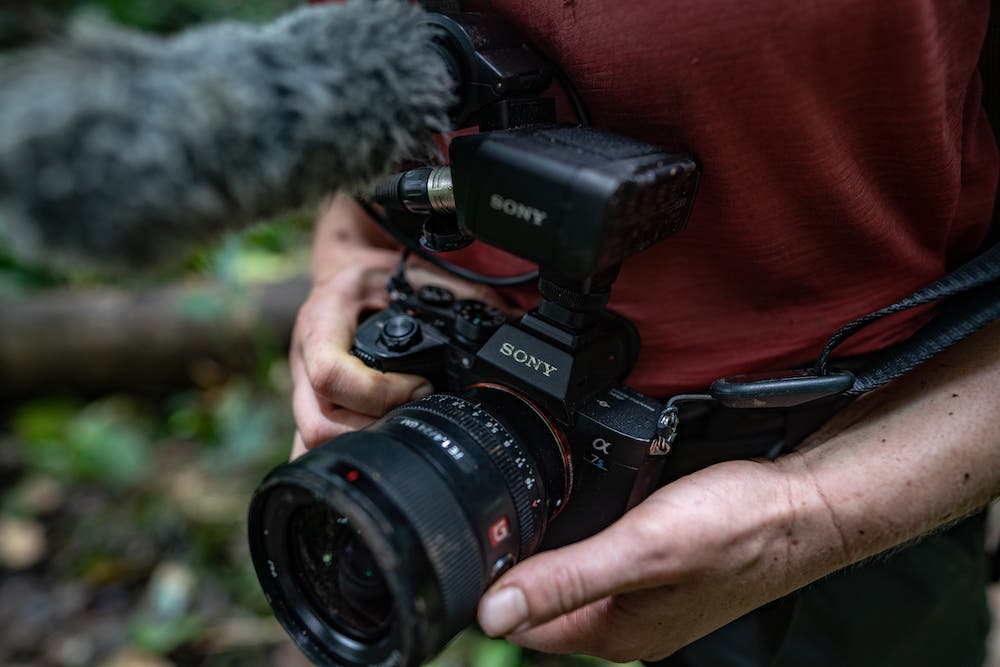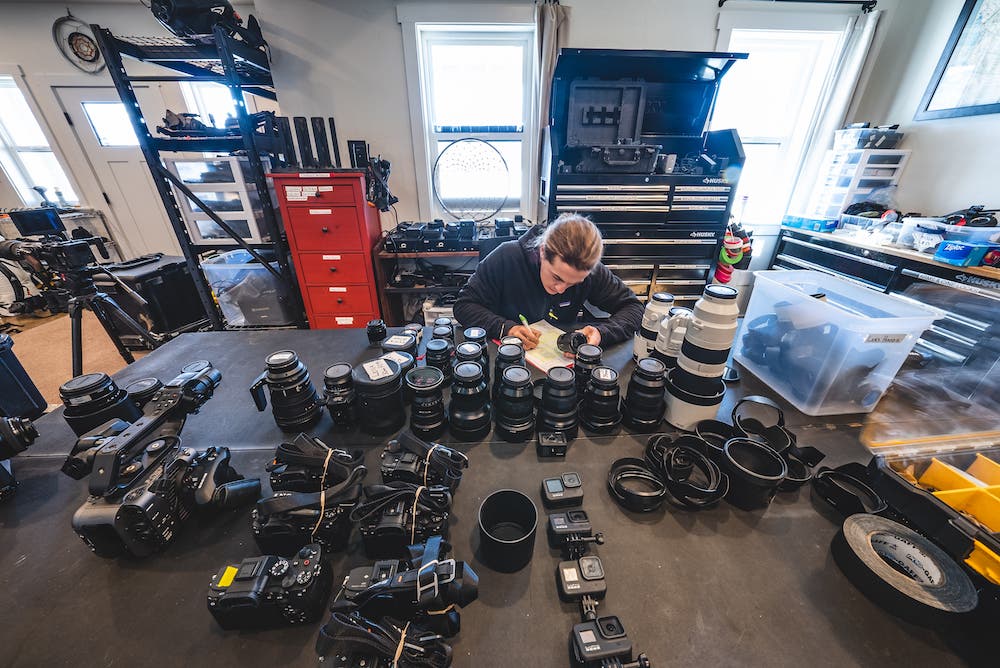Director and cinematographer Taylor Rees on her National Geographic Expedition to the Guyana Cloud Forest for her newly released Disney+ show, “The Last Tepui.“
The early planning calls for our expedition to Guyana were mind-boggling. National Geographic writer Mark Synnott and his friend and biologist Dr. Bruce Means walked me through the plan. We’d trek 50 miles through the dense Guyana rainforest to Weiassipu Tepui. This is a towering mesa of orange rock that looked straight out of Jurassic Park. This is where famed climber Alex Honnold would lead the team up the 700-foot cliffs guarding its sprawling summit. If Bruce could find new species of frogs and other creatures on top of the tepui, the Guyanan authorities might be more willing to protect this rare biodiversity hotspot from encroaching gold and diamond mines.


I listened to these plans and silently calculated how many porters we’d need to transport all the climbing and camera gear. I wondered how on Earth we could possibly set up enough remote battery-charging and data-downloading stations to fully document the expedition. While the challenge was daunting, I’d never been so excited for an expedition in my life.


Part of my excitement came from knowing that Guyana’s impenetrable cloud-forests were ideal testing grounds for all groundbreaking camera technology created in the last decade. Here, we could really push ourselves and our cameras. Deep under the shadowy canopy — carrying everything on our backs — we’d be challenged daily to deliver the high quality images and footage that a National Geography assignment demands.


Cameras
My quiver consisted of three breakthrough cameras: the Sony Fx6, Sony A1, and Sony A7s3.
Sony Fx6 Camera
The Sony Fx6 acted as my main video camera. Embarking from Wayalaleng Village — home to our guides from the indigenous Akawaio culture — I was soon overwhelmed by the shooting challenges. So much mud! We were slipping and sliding everywhere, tip-toeing across log bridges over muddy streams, and occasionally falling in.

Chasing after the far more agile guides, I soon found myself utterly reliant on the Fx6‘s autofocus and built-in variable ND filter. Despite the complexity of the jungle setting, the autofocus kept subjects tack-sharp even at f1.4. Instead of having to change filters — and possibly scratching them in the process — I could use the ND filter scroll-wheel to smoothly dial in exposures while the light shifted from minute to minute.
Also, I could rely on the Fx6’s pro pre-amps and XLR inputs, paired with Sennheiser microphones, to produce clean sound in any situation. This is vital to keep an audience immersed in a story. I’d be lying if I said I didn’t make frequent use of the camera’s wildlife cinematography lifesaver: its cached pre-recording capability. If I missed something, I could hit record and still capture the moment. This is invaluable for shooting frogs skittering across dappled logs.


Impressively, cinematographer Matt Irving carried a Fx6 with a Sony 18-110 mm cinema lens the entire journey — even while scaling the wall with Alex. Despite the extra bulk, Matt refused to relinquish the tool most guaranteed to give him sharp, well-balanced results every time he turned it on.

Sony A1 Camera
The light and compact Sony A1 would be used for stills and run-and-gun 8K video. Since I was the expedition film director, I mostly kept the Fx6 in my hands for its video capabilities. Although, I always had a Sony A1 around my neck to capture stills at a moment’s notice. During the most intense river crossings, the Fx6 would go back into its bag for protection, but the A1 always stayed out. I could quickly flip it into video mode should anything important happen during these nerve-wracking moments.

As the principal stills shooter for the National Geographic magazine story, Renan mostly stuck with the A1. He also used his favorite lens — a 35mm f2.0. With this combination, he could capture stunning action stills and footage of Alex while hanging from a rope, high on the wall. He could also catch fleeting, and intimate portraits of our guides and porters in camp. Before embarking, we’d programmed our A1s so we could quickly switch them between our preferred settings for RAW stills, 10-bit 4:2:2 8K video, and 10-bit 120 fps 4K slo-mo.


Sony A7s3 Camera
The Sony A7s3 would come in handy for all the low-light situations we’d face. This assignment might have been impossible without the A7s3. This is truly the low-light monster among modern mirrorless cameras. To capture the jungle’s frogs with enough clarity for Nat Geo’s standards, we brought with us the Venus Laowa 24mm f/14 2x Macro Probe Lens. This is basically a magic wand when it comes to shooting small, highly detailed subjects. It has a 16-inch-long, one-inch-diameter barrel and a tiny LED ring-light around the lens opening.

With apertures ranging from f18 to f40, we had to crank the ISO up to 16,000 while under a dim jungle canopy, but still got usable images that weren’t overly noisy. Also, using our usual lenses, we sometimes wanted to shoot at narrower f-stops for longer depths of field in scant light. The remarkable Sony A7s3 allows for that.

Over the course of the difficult trip, these cameras indeed proved to be an unbeatable package. Even with the unceasingly wet, slimy conditions, the hard climbing, and the tens of thousands of images and terabytes of footage we gathered during the expedition, all our cameras survived. This is a testament to their construction and durability. If we had any doubts about their usability before this expedition, they’ve been erased. With these three units — the Fx6, the A1, and the A7s3 — we now have the ultimate hard-conditions cinema and stills camera kit. Even more incredibly, they all fit in one camera bag together.

Lenses
As you might imagine, we had a full retinue of lenses with us since Renan is renowned for destroying multiple lenses on every expedition. We mainly used our three most proven lenses.

24-70mm Lens
35mm Lens
24-105mm Lens
If you can compile these pieces of equipment — with just a few lenses to get the job done — there are no more excuses for not getting A+ imagery. This gear is made to last, no matter how challenging the circumstances or demanding the assignment. Which raises the question: where will we go from here?
You can check out my AdoramaTV video about this project here:






